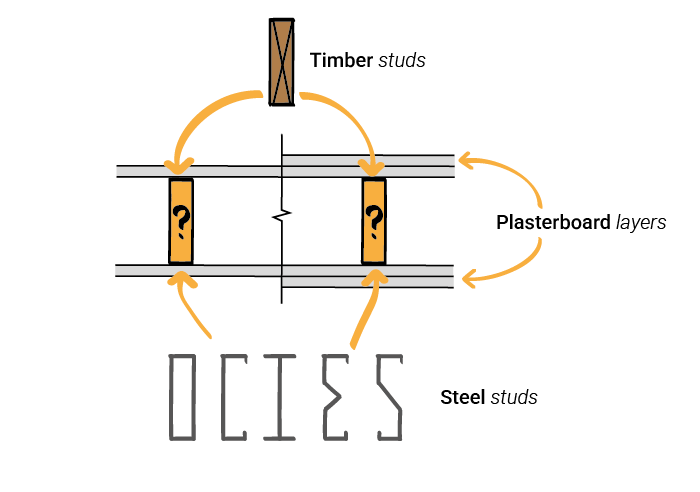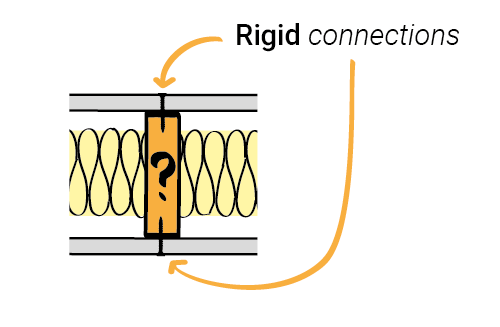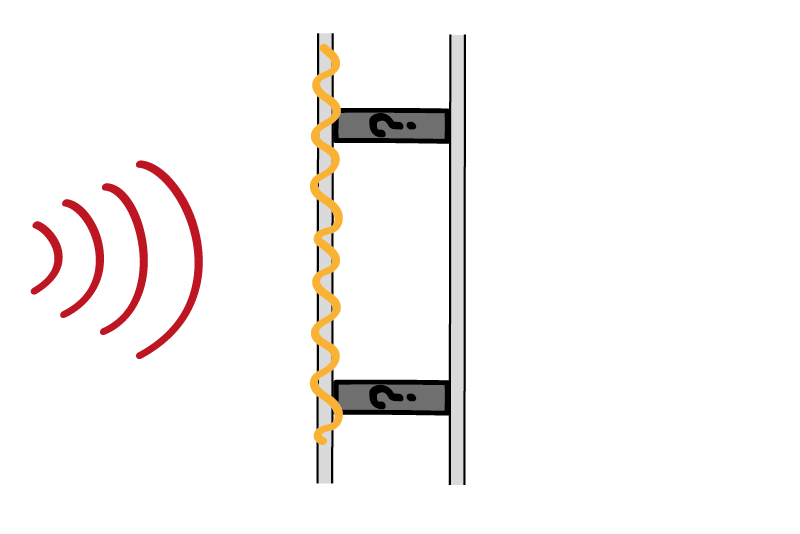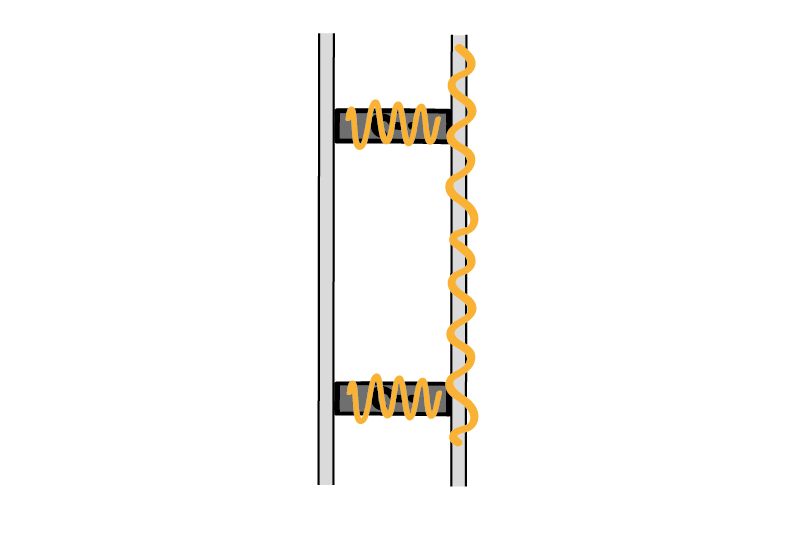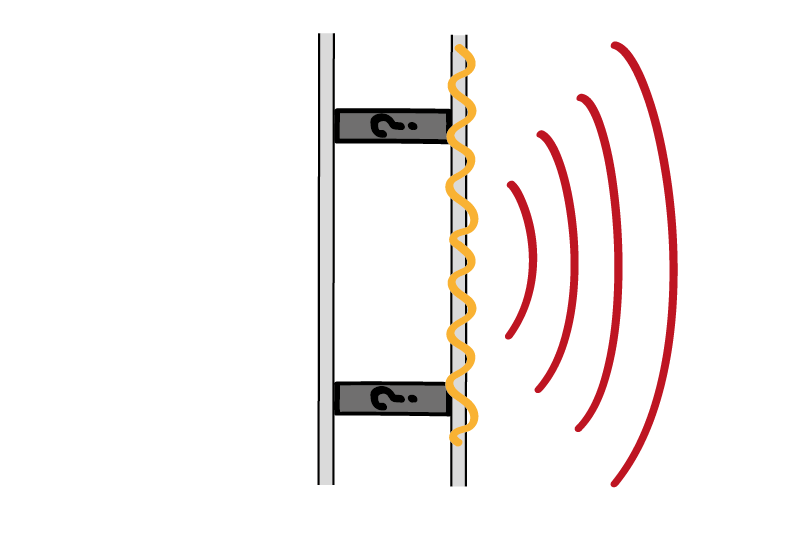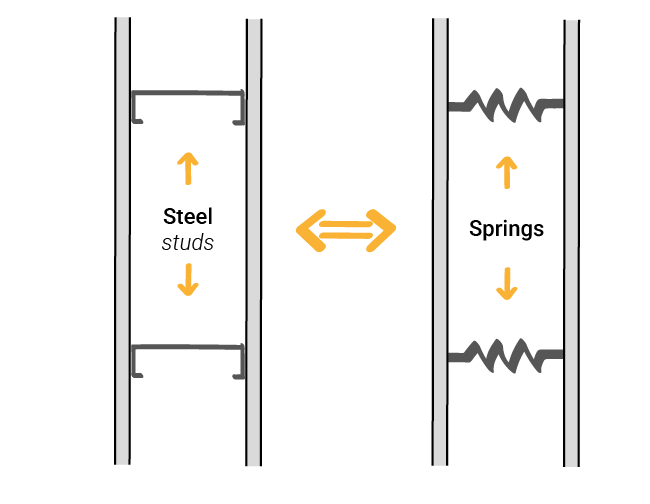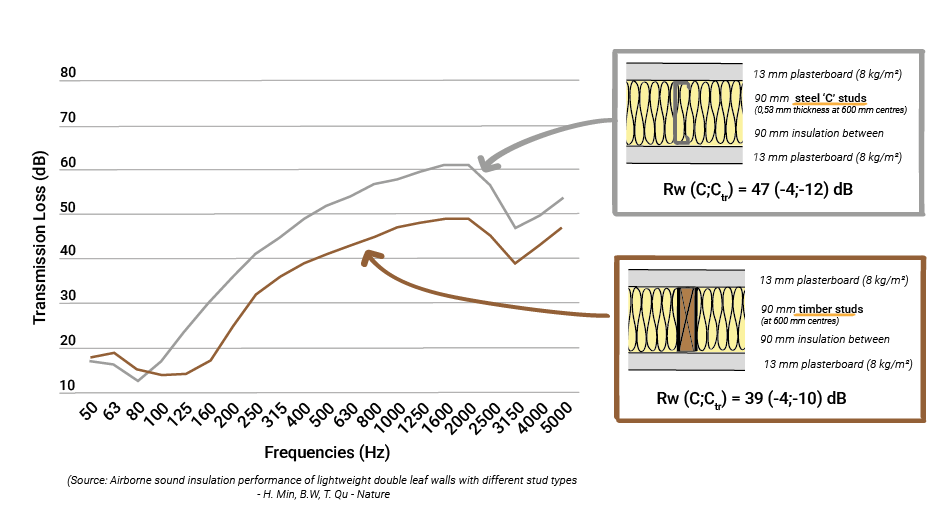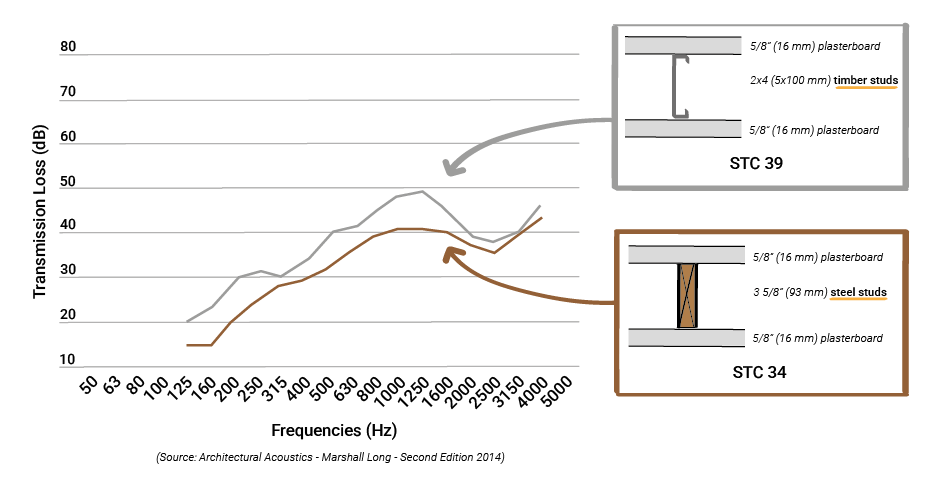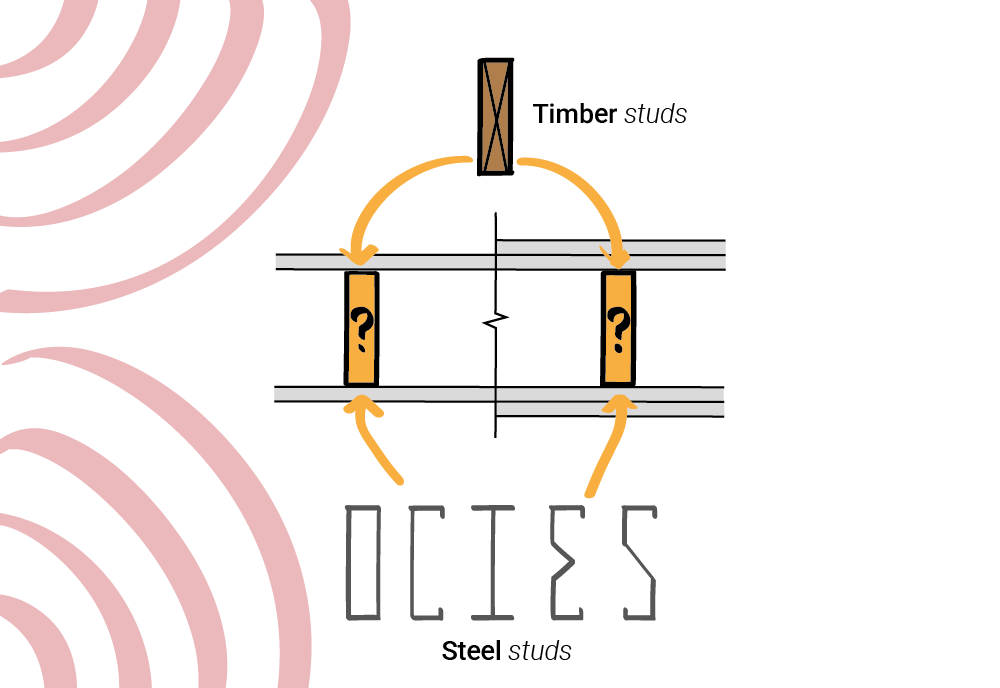
When it comes to sound insulation in buildings, the material of the studs used in wall construction can make a significant difference in performance.
Whether you are designing residential, commercial, or industrial spaces, understanding the acoustic properties of materials like timber and steel is crucial for achieving optimal sound insulation.
In this short post, we explain/give:
- how sound travels through lighweight single stud walls.
- why the acoustic performance of single stud systems is different whether they use timber or steel studs.
- a few examples of acoustic performances (in frequency bands and broadband) for single stud walls with timber and metal studs.
Enjoy the read!
How sound travels through lightweight single stud walls
Understanding typical single stud wall constructions
In most buildings, walls use one or several layers of plasterboard, fixed on either side of a stud frame.
We often fill the cavity between the boards with insulation, generally made a light and fibrous material (like mineral wool, wood fibre, hemp fibre, sheep wool, cotton fibres, etc).
This system is simple, cost-effective, and easy to build.
But when it comes to sound insulation, the stud material plays a role — especially in single stud systems, where the wall uses just one row of studs.
In these cases, plasterboard is fixed directly to both sides of the frame, so the choice between timber (wood) and metal (steel) can make a difference in performance.
How Sound Travels Through Stud Walls
When someone talks or plays music on one side of a wall, sound waves hit the plasterboard and make it vibrate.
That vibrations move in the studs, cross the cavity, and sets the plasterboard on the other side into motion.
These tiny movements push and pull the air, which recreates the sound on the other side.
This is how sound travels through a wall.
If the two plasterboard layers connect too rigidly, they move as one unit — and sound passes through more easily.
To block the sound, we must weaken the connection between both sides.
This is why the flexibility of the studs plays such a big role in sound insulation.
Why do steel studs perform better acoustically than timber studs overall
It may ‘sound’ surprising, but metal studs can be more flexible than timber studs.
Thin-gauge steel studs, commonly used in lightweight walls, bend slightly more than timber studs when sound hits them.
This flexibility helps decouple both sides of the wall, so less vibration passes through — almost like adding a spring between two boards.
In other words, steel studs attenuate sound vibrations more effectively, and they do it across a wide range of frequencies (between approximately 100 Hz and 4 kHz, but it depends on the type of studs).
See below are a few examples that illustrate the difference in acoustic performance between timber and steel stud systems.
References
See below the references used to confirm the above concepts:
- Architectural Acoustics – Marshall Long – Second Edition 2014
- British Gypsum test data – https://www.british-gypsum.com/specification/white-book-specification-selector/white-book-overview
- Airborne sound insulation performance of lightweight double leaf walls with different stud types – H. Min, B.W, T. Qu – Nature (https://www.nature.com/articles/s41598-024-82403-w)

